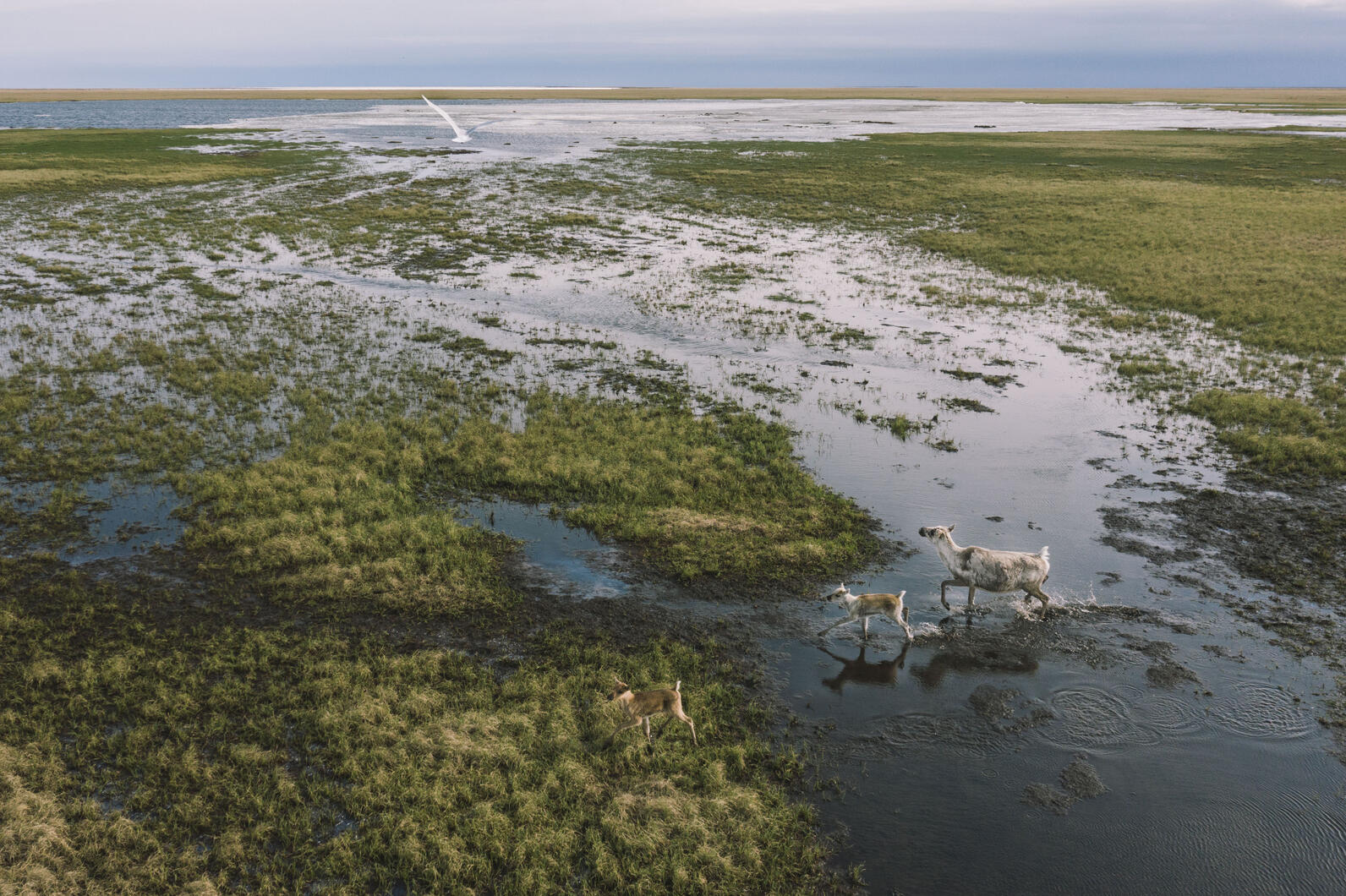We’re celebrating in our Audubon Alaska office in Dgheyey Kaq’/Anchorage, Alaska! In addition to the positive Ambler Road announcement, the Department of the Interior under the Biden administration dropped a new rule strengthening protections for 13 million acres of “Special Areas” in the National Petroleum Reserve–Alaska. The rule also creates a process for designating new special areas within the Western Arctic—a region that is home to numerous Alaska Native communities and one of the most important habitats for birds and wildlife on the planet. This announcement will most likely be part of a slue of Earth Month announcements about conservation and combatting climate change.
“This rule is critical to protecting the Western Arctic,” said Marshall Johnson, Chief Conservation Officer at National Audubon Society. “As the Arctic rapidly warms, these new regulations will ensure that critical bird habitats like the Teshekpuk Lake Special Area will be resilient in the face of climate change. It is long past time that these lands and waters are given maximum protection.”
“As the Arctic undergoes dramatic climatic changes, this new rule is absolutely necessary to protect birds, caribou, and fish,” says David Krause, Interim Executive Director at Audubon Alaska. “Durable protections of these intact and functional ecosystems are essential for habitat and species adaptation, and the continuation of cultural resources and practices throughout the region.”

For context, Alaska’s Western Arctic has five Special Areas (regions within the 23-million-acre NPR–A with significant subsistence, recreational, fish and wildlife, or historical or scenic value). They are the Utukok River Uplands, Kasegaluk Lagoon, Colville River, Peard Bay, and Teshekpuk Lake—a crucial place for birds.
The 3.65-million-acre Teshekpuk Lake Special Area alone is one of the most ecologically important wetlands and areas for waterbird nesting, molting, and migration (like Brant and Yellow-billed Loon) in the Circumpolar Arctic. This internationally recognized area encompasses wetlands, coastlines, barrier islands, and the Ikpikpuk River Delta, and is the place from which birds disperse along all four major flyways. The Special Area is also a high-density waterbird nesting habitat for species like Arctic Terns, Canada Geese, King Eiders, Long-tailed Ducks, Northern Pintails, Pacific Loons, Red-throated Loons, Sabine’s Gulls, Tundra Swans, Greater White-fronted Geese, and shorebirds.
Cornell Lab of Ornithology’s Center for Conservation Media
If you’re unfamiliar with the beauty and abundance of the Teshekpuk Lake Special Area, watch this 18-minute film from the Cornell Lab of Ornithology’s Center for Conservation Media.
To recap, today’s actions follow a Biden administration announcement from September 6, 2023, that stated the Bureau of Land Management was to initiate a new conservation rule to strengthen protections for Special Areas and establish a process for creating additional Special Areas within the NPR–A. This prompted a 90-day comment period during which Audubon generated 19,675 comments urging the agency to ensure the strongest protections possible for these invaluable regions of the Western Arctic.
For more information, or to interview folks from the Audubon Alaska team, please contact Lauren Cusimano, Audubon Alaska’s Communication Manager, at 907-433-5300 or lauren.cusimano@audubon.org.




